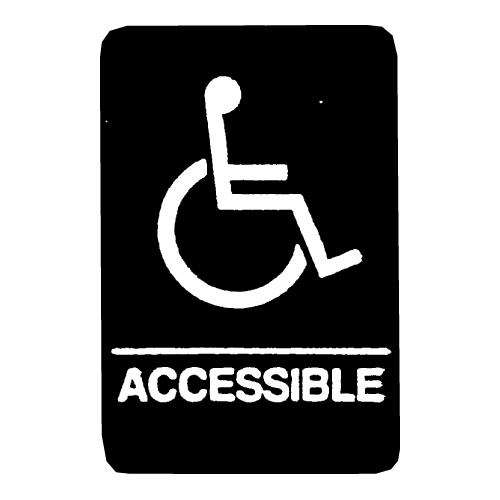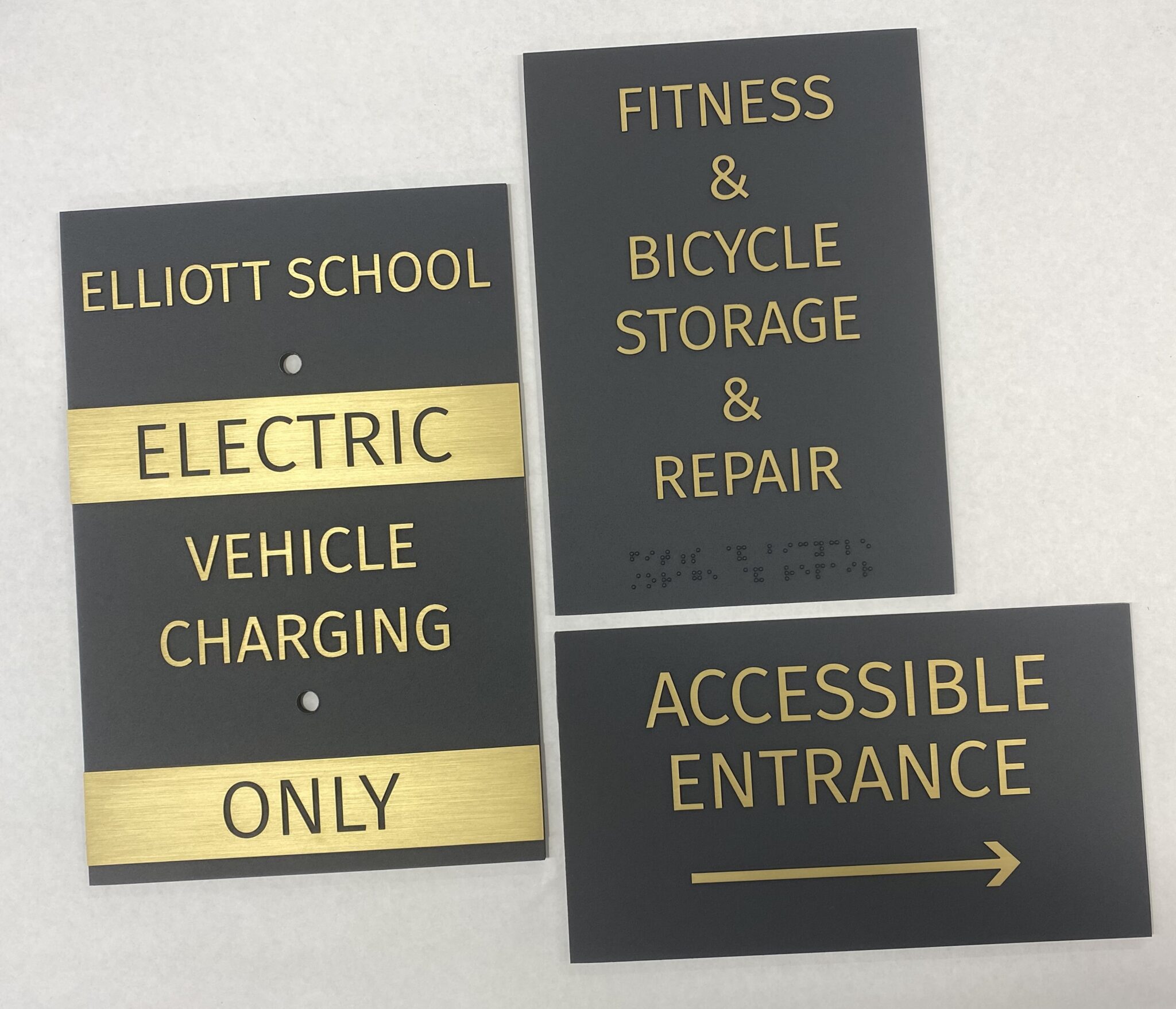ADA Signs: Necessary Devices for Inclusive Settings
ADA Signs: Necessary Devices for Inclusive Settings
Blog Article
ADA Signs: Making Sure Accessibility and Conformity in Public Spaces
ADA signage plays an indispensable role in ensuring availability and conformity within public spaces, significantly contributing to an inclusive atmosphere for individuals with specials needs. As we discover the subtleties of ADA signs, from responsive attributes to make intricacies, it's essential to think about exactly how these aspects integrate to promote the civil liberties of all customers.
Relevance of ADA Signs
In modern-day society, the value of ADA signs expands past plain conformity with legal mandates to embody a commitment to inclusivity and accessibility for all individuals. These indicators are essential in developing atmospheres where individuals with impairments can navigate public rooms with the very same convenience and self-reliance as those without handicaps. By giving standard and clear information, ADA signage makes certain that everybody can access centers, solutions, and info without barriers.
The importance of ADA signs depends on its ability to enhance the quality of life for people with impairments by promoting equivalent gain access to. It gets rid of the challenges that might or else impede their capacity to take part fully in neighborhood life. Additionally, these signs function as visible indications of an organization's devotion to variety and equality, reflecting wider societal worths that champion the legal rights and dignity of all individuals.
Furthermore, ADA signs plays a vital role in public security. By leading individuals to departures, restrooms, and other crucial centers, it guarantees that all individuals, despite physical capacity, can evacuate safely throughout emergency situations. In summary, ADA signage is not just a regulative requirement however a powerful device for cultivating a comprehensive and fair culture.
Crucial Element of Compliance

Placement is important; signs should be set up in places that are quickly visible and obtainable. Commonly, signs should be placed between 48 and 60 inches from the ground to make sure access for both standing and mobility device customers. Responsive aspects, such as Braille, are necessary for individuals with visual impairments, giving essential details in a non-visual layout.
High-contrast colors between the message and history are needed to improve readability for individuals with reduced vision. The ADA mandates certain contrast ratios to make sure clearness. Furthermore, character dimension is a crucial consideration, with minimum elevation needs dictated by the viewing range to make sure readability from various angles.
Layout Factors To Consider for Ease Of Access
Designing easily accessible signage needs a thorough method to guarantee it fulfills the needs of all customers, particularly those with impairments. The dimension of the message is equally crucial, with ADA standards recommending a minimum elevation based on watching range to guarantee clarity.
Contrasting shades in between text and history are crucial for exposure, particularly for people with aesthetic disabilities. In addition, responsive aspects, such as Braille and increased characters, are important for individuals who are blind or have low vision.
Furthermore, the positioning of signs plays a considerable function in access. Indicators need to be set up in places that are quickly reachable and unblocked. Making certain that signs is installed at appropriate elevations and angles enables all individuals, including those making use of mobility devices, to communicate with them effectively.
Usual Errors to Avoid

An additional common error is the inaccurate placement of signs. ADA guidelines define exact elevation and place needs to make sure that signs are reachable and conveniently visible by all people, including those utilizing wheelchairs. Ignoring these standards not just hinders access however additionally runs the risk of non-compliance with lawful standards.
In addition, not enough comparison between message and background is a constant oversight. Sufficient comparison is essential for readability, particularly for people with low vision. Developers sometimes select shades that are visually enticing but do not have the necessary comparison, providing the message difficult to recognize.
Last but not least, some developers fail to integrate responsive components, such as Braille, which are critical for people who are blind. Omitting these functions not just causes non-compliance with ADA regulations but likewise restricts accessibility for a segment of the population that depends on responsive details.
Future Trends in Signs
Developments in innovation and enhancing awareness of inclusivity are forming the future patterns in signage design. Digital signage, for circumstances, is progressing to include real-time updates and interactive features, which can be critical in giving vibrant details in public areas.
An additional arising pattern is the usage of increased truth try this website (AR) to enhance individual experience. AR-enabled signage can overlay electronic information onto the physical setting, offering aesthetically damaged people with auditory or haptic feedback. ADA Signs. This modern technology not only boosts availability but likewise develops an appealing experience for all individuals
Sustainability is also a considerable factor affecting signs trends. Eco-friendly materials and energy-efficient lights remedies are being prioritized to line up with international environmental objectives. Moreover, developments in materials scientific research are resulting in the growth of more long lasting and weather-resistant signs.
Conclusion
ADA signage plays an important function in assuring access and compliance within public spaces by integrating responsive components, high-contrast shades, and strategic placement. The adherence to ADA standards not only facilitates risk-free navigation for individuals with specials needs however additionally indicates a company's devotion to variety and inclusivity. By avoiding typical errors and accepting future patterns, public over at this website areas can remain to advance these values, guaranteeing that the civil liberties and self-respect of all people are appreciated and maintained.
ADA signs plays a crucial duty in assuring ease of access and compliance within public spaces, significantly adding to a comprehensive setting for people with impairments. As we explore the nuances of ADA signs, from responsive functions to develop complexities, it's essential to consider just how these components coalesce to support the civil liberties of all users.In modern-day society, the significance of ADA signage expands beyond simple conformity with lawful requireds to symbolize a commitment to inclusivity and access for all people. By offering standardized and clear details, ADA signage guarantees that everybody can access facilities, solutions, i was reading this and info without obstacles.
ADA signs plays a crucial role in assuring availability and compliance within public rooms by integrating tactile components, high-contrast shades, and calculated placement. (ADA Signs)
Report this page